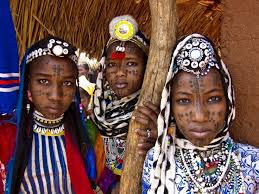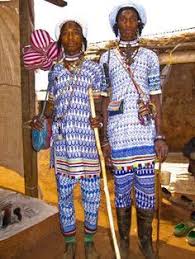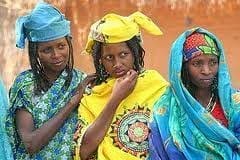The Central African Republic has a bad reputation largely because of political instability, but travelers who are adventurous enough quickly find out that it is generally safe, and that it offers plenty of unique things to see, explore and discover.
History
Before the French colonized most of central Africa in the 1880’s, many tribes had already fled to the Central African Republic to avoid the slave trade. These people lived outside the growing Islamic frontier of Africa’s Sudanic zone, and had very little contact with others. In the early 19th century, Muslim traders gradually arrived to forge special relations with leaders for settlement and trade. It was generally a peaceful process, until slave traders arrived in the 1850’s with armed soldiers.
Around 1910, the Ubangi-chari area became part of French Equatorial Africa, but it was given its own assembly after WWII. By 1958, the country had its own self-governing body. Barthelemy Boganda, a nationalist politician, served as the prime minister. He died the next year, leaving his nephew David Dacko to take over. In 1960, Dacko led the Central African Republic to independence.
The country was facing political problems and bankruptcy by 1965, which was when Jean-Bedel Bokassa, an army chief, overthrew Dacko. Bokassa was notorious for his iron-fist ruling. Throughout his reign, the country was referred to as the “Central African Empire.” Bokassa even arranged a coronation ceremony for himself in 1977, depleting the nation’s annual income by over a quarter for its lavish celebration. His reign ended in 1979 when Dacko exiled him to France and eventually peaceful relations were restored.
Dacko was eventually ousted in 1981 by a military coup led by the former army commander, André Kolingba. The Central African Republic was left in a transitional period until the May 2005 parliamentary and presidential elections. Patassé was then replaced by François Bozizé.
Culture
The people of the Central African Republic are composed of several groups, mainly the Bwaka, Madjia, Baya, and Banda. The majority are farmers who grow export crops like coffee and cotton, plus local items like peppers, bananas, sweet potatoes, corn, yams, tobacco, peanuts, and rice. Though the area was overtaken by Muslims at some point in history, only 15 percent of the population is Muslim. About 25 percent of the population is Roman Catholic and 25 percent is Protestant. The remaining 35 have retained their indigenous religions.

People are generally family-oriented and hospitable. Most locals dress informally, but people living in Muslim areas dress modestly. Visitors are expected to respect local culture. Women are still segregated in some regions, especially in small towns and villages where they are limited to domestic chores like cooking and housekeeping.
Shaking hands is customary in the Central African Republic. Locals eat using their hands, so travelers are advised to eat with their hands out of respect. Just be sure to eat with the right, because the left is often used for the bathroom.
Music is a hodgepodge of influences, with sanza being the popular instrument. Genres like soukous, Afrobeat, pop music, and Western rock are all favorites, but the Pygmies have their own folk traditions.
Central African Republic, landlocked country located in the centre of Africa. The area that is now the Central African Republic has been settled for at least 8,000 years. The earliest inhabitants were the probable ancestors of today’s Aka (Pygmy) peoples, who live in the western and southern forested regions of the country. The slave state of Dar al-Kuti occupied the northern reaches until the various regions of the Central African Republic were brought under French colonial rule late in the 19th century. Colonial administrators favoured some ethnic groups over others, resulting in political rivalries that persisted after independence in 1960. Following periods of civil strife and dictatorial government, including the infamous regime of the self-styled Emperor Bokassa I (who renamed the country the Central African Empire), the country embarked on a course of democracy that was threatened, at the end of the 20th century, by interethnic civil war in neighbouring countries as well as by attempted coups d’état. Weary of social chaos and shifting allegiances among contending elements of the power elite, the country’s citizens quote a regional proverb, “When elephants fight, the grass suffers; when elephants make love, the grass still suffers.”
Central African Republic – Customs
When greeting a large group of strangers, Central Africans commonly raise both hands, palms out, and greet them verbally. If the group is smaller, everyone’s hand is shaken; this even applies when greeting strangers in restaurants and bars. When greeting someone in an official capacity, a handshake is common. If the person greeted is older or a government official, it is customary for the greeter to nod his head lower than the elder official’s. A handshake with a friend may involve the snapping of the middle fingers.


Friends of both sexes are greeted by three kisses on the cheeks: one on one side followed by two on the opposite side. They also may be greeted with a handshake followed by a snap of the fingers. It is also customary to inquire about the person’s health, family, and fields. It is important to remember that failure to greet people properly can lead to hostility.
With formal greetings, titles should be included. Common greetings are: “Bara ala” (for more than one person) and “Bara mo” (for one person), followed by “Tonga na nyeh?” (How are you doing?) and “Ala yeke da? (senge?)” or “Mo yeke da? (senge)?” (Are you healthy?). There are many permutations of this. The common Muslim greeting is “Salaam alay koom. Kekef?” The common French greeting is “Bonjour.”
To express agreement, a person may inhale quickly, nod his head, or make a clicking noise with his throat. Some people beckon by hissing loudly. People also beckon with their hands by opening and closing them, palm down. Pointing with one finger is impolite.

Central Africans place a great deal of importance on dress. People dressed sloppily are not respected. When Central Africans go out they wear their best clothes. Men may wear African-style suits or complets, matching pants and shirt in colorful fabric. Women usually dress similarly in a tailored top, two wraparound skirts, and a scarf to cover the head. Outside of Bangui, the less affluent wear African-print wraparound skirts with Western tee-shirts.

Sensible cotton clothing and sturdy, comfortable shoes are recommended attire for visitors to the C.A.R. Shorts are unacceptable, especially for women, with the exception of those participating in athletic events. Skirts or dresses should be long enough to cover the knees; tight slacks or jeans will draw attention in certain circumstances. Eating with the left hand may be perceived as offensive. Wearing shorts is considered disrespectful.
Mu Na Mbi is a cultural practice that must be understood by visitors to the C.A.R. Mu na Mbi literally means “give to me.” It is widely used and represents Central African customs of respect and sharing. For example, a visiting official may like a pen. The official will say “mu na mbi;” the owner of the pen is expected to give the pen out of respect.
Many foreigners become irritated by this practice, but it is important to recognize that it applies to Central Africans as well. Those confronted with this practice can retain the item in question by telling a story that relays the item’s sentimental value. If this happens and you really want to keep the item, it is best to tell a story about the sentimental value of the item to prove that it cannot be given away.

A typical daily diet consists of a manioc, or cassava, porridge that resembles bread dough and a sauce that usually contains manioc or other green leaves and may contain some type of meat. A piece of the porridge is broken off with the hands and dipped into the sauce. Meat is expensive, and can be difficult to obtain. As a result, most families do not have it every day. Meals are usually eaten from a common bowl, with the men eating from one, and the women and children eating from the other, usually in the cooking area.


There is a wide variety of fruits and vegetables, including mangoes, oranges, pineapples, papayas, tomatoes. Other popular foods are peanuts and yams. Meat may be beef, goat, or some type of antelope. Some Central Africans eat caterpillars or locusts. Central Africans expect meat when invited to dinner with a foreigner, as foreigners are considered wealthy.


In rural C.A.R., the customs are traditional; marriages may be arranged and often the bride is younger than the groom. Polygamy is less common now than it was due to Christian influence, but it still happens. It is commonly accepted for men to have affairs or several girlfriends, but the same does not apply to women. The groom is generally expected to offer gifts to the bride’s family. Most women have many children, and the responsibility of raising those children may be divided among family members. Children often refer to their uncles as baba kete, which means “little father,” and accord them the same respect that they give to their biological father.

Central Africans expect to be tipped for doing favors. When one parks his vehicle, he should expect people to offer to guard the vehicle. It is customary to choose one or several of them and thank them for their services with either money or food.
Reference-
https://www.globalsecurity.org/military/world/africa/car-people-customs.htm#:~:text=Men%20may%20wear%20African%2Dstyle,skirts%20with%20Western%20tee%2Dshirts.
https://www.britannica.com/place/Central-African-Republic
https://www.everyculture.com/Bo-Co/Central-African-Republic.html
By Nidhi Singh

